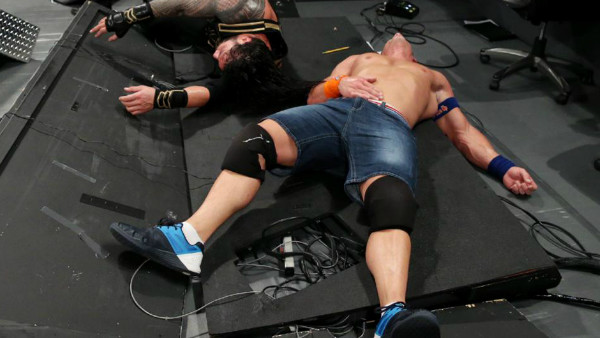Wrestling’s First Ever Kayfabe Break
How can you break that which is already broken?

Kayfabe was broken in front of the paying audience before that paying audience even became aware of the insider term. Kayfabe is broken with such frequency in this modern era that, at times, it is almost impossible to reconcile the shattered narrative.
Consider last year’s programme between John Cena and Roman Reigns, the very premise of which reinforced the pantomime of it all. This wasn’t a programme designed to determine who was the better man, but to question the credentials of Roman Reigns as a performer within the literally scripted confines of WWE’s sports entertainment. With “shoot” jabs designed to determine the better performer in place of traditional better man posturing, this, ultimately, was a strange and unfulfilling narrative choice. Who did John Cena endorse at No Mercy, anyway? A guy who can’t even cut a promo without a writer?
Cena Vs. Reigns was hardly an insult. Built on a lie, the foundations of pro wrestling were always as strong as sand.
Kayfabe was broken in 1911, if not earlier, when Karl Gotch shot on and very quickly dispatched the injured George Hackenschmidt, in revealing contrast to their gruelling multi-hour slog three years prior. An infamous match either bereft entirely of drama or not on the level, it precipitated the nascent industry’s popularity downfall.
The very practise of shootings and screwjobs exposed the work; in order for the screwing to take place, the screwers had to expose the inner machinations of the industry - to break kayfabe, in effect. Holds that were ordinarily applied for an age, in order to extract the maximum drama of the sell, were legitimately locked in hard to force just one of several beleaguered fall guys, Danno O’Mahoney, to infamously squeal “Stop it, I tell you! He’s killing me!” at MSG in 1936.
Those holds must have hurt more than the wrestlers feigned to the contrary.
Fans, turned off by the outlaw artifice reinforced through the manifested ugly politics of revealing title changes, only returned to wrestling in considerable number when this artifice was perfected in the 1930s.
The proto-sports entertainment, twinned philosophies of Toots Mondt and Jack Pfefer converged to create a lucrative platform for the subsequent Golden Age of 1950s wrestling television. Mondt revolutionised the in-ring style, dispensing with the marathon crawls via the invention of countless new cooperative holds and manoeuvres, while Pfefer coloured the landscape with a crazy cast of characters. Pfefer - an infamous eccentric - himself broke kayfabe in print to the New York Daily Mirror by damning the shady practises of his promoter peers. Casting them as dishonest, he revelled in the dishonesty by promoting a new, carefree genre that prioritised theatre over legitimacy and did not insult the intelligence of his fans.
CONT'D...